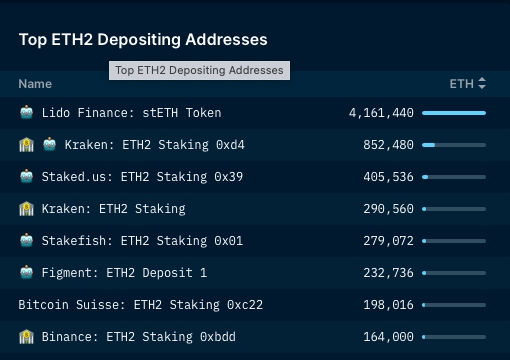Ethereum’s move from proof-of-work (PoW) to proof-of-stake (PoS) consensus mechanism will mark the beginning of a new chapter for the second largest blockchain on the market. However, despite the many expectations of the community, some analysts have shown their apprehension about the risks of centralization that the Merger could bring.
After the merger, verification of transactions and securing the blockchain will rely on validators and no longer on miners. Staking pools are a popular tool for investors without the funds or knowledge to get involved in securing Ethereum. Indeed, becoming a validator has a cost of 32 ETH that the vast majority of ordinary users cannot afford. In addition, the ETH deposited as collateral on the “Beacon chain” are illiquid. Until the merger, these ETH will be impossible to recover and therefore cannot be sold or used elsewhere.
This is how staking pools were born, third parties where users deposit their ETH. These entities use the funds to set up validators and manage the overhead of running the nodes. In exchange, they collect a share of the rewards and redistribute the rest to the depositors.
Currently, 64% of ETH placed in staking is in the hands of 5 entities. Indeed, 30% of ETH in staking is controlled by LidoFinance23% by a group of unknown validators, 15% by Coinbase8% per kraken and 7% by Binance. It’s not hard to see why these pools are worrying the crypto community as the merger is fast approaching: single entities controlling large groups of validators goes against the very idea of decentralization.
Lido Finance in particular has attracted the attention of the ETH community because of its control deemed disproportionate which could lead to an attack on the network. Previously, many analysts, including Danny Ryanresearcher at the Ethereum Foundationhave suggested that limits should be applied on the amount of ETH held by a protocol or project.

The Lido Finance community had also organized a vote on the subject on June 24. However, the results are final. Data shows that more than 99.8% of community members have decided to vote against the implementation of these limitations. Thus, Lido is looking for other ways to minimize the risks posed by its staking dominance. In particular, the platform is studying a proposal to introduce a dual governance structure for the protocol. This dual governance architecture will involve including staked ETH (stETH) holders in the decision-making process of the DAO.
For the moment, Vitalik Buterin himself had declared that concerns about centralization, while justified, were disproportionate. According to him, Lido does not operate as a single entity, but its architecture relies on 21 delegates and nodes that operate these validators, which leads him to conclude that the decentralization mechanism seems to be operational within the protocol. Once the merger is deployed, however, the situation could change again and therefore remains to be watched closely.
Follow our affiliate links:
- To buy cryptocurrencies in the SEPA Zone, Europe and French citizensvisit Coinhouse
- To buy cryptocurrency in Canadavisit Bitbuy
- To generate interest with your bitcoinsgo to the BlockFi website
- To secure or store your cryptocurrenciesget Ledger or Trezor wallets
- To trade your cryptos anonymouslyinstall the NordVPN app
To invest in cryptocurrency mining or masternodes:
To accumulate coins while playing:
- In poker on the CoinPoker gaming platform
- To a global fantasy football on the Sorare platform
Stay informed with our free weekly newsletter and to our social networks:
